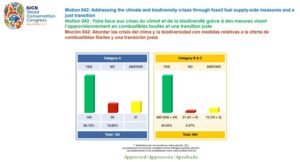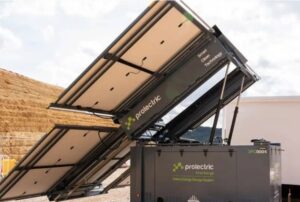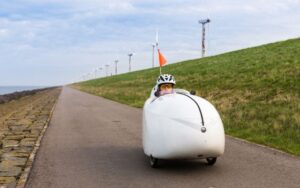Where do we stand? Resilience investments pay dividends and efficient travel
In this issue:
Where do we stand?
Last week, the IUCN (International Union for Conservation of Nature) concluded its World Conservation Congress for 2025. The Congress was attended by 160 countries and passed Motion 42 on its agenda by a vote of 105:26 (Category A) and 580:31 (Category B), between 80% and 95% supporting. Motion 42, among other things, called for an end to new fossil fuel projects and to create an equitable path away from fossil fuels consistent with 1.5C warming. New Zealand is a member of the IUCN and attended the Congress but it is unclear quite how our government, in the form of DOC, voted on this particular motion. Perhaps an OIA enquiry is warranted?
Resilience investments pay dividends
A new report, from a group of research teams coordinated by Systemiq, concludes investment in adaptation returns $4 for every $1 spent and an annual average return of 25%. The report suggests inaction could cost 23% of global GDP by 2050 and states much has to change. Currently, for every $1 spent on resilient infrastructure, $87 is invested in assets that ignore climate and nature risks. Redirecting to resilient projects would create 280 million jobs globally and in some vulnerable areas could increase GDP by 15% by 2050.
Celebrating heatpumps
Thursday 23rd October is officially heatpump water heater day. Initiated by the Advanced Water Heating Initiative, we should all be celebrating heatpumps for their efficiency and cost-effectiveness.
Yeah Nah for shipping
First it was on, then threatened, then definitely on and now deferred for at least a year. That’s the International Maritime Organisation’s global carbon tax for shipping to clean up the 1 billion tonnes of GHG emissions the industry pumps into the atmosphere each year. It seems the US, supported by Saudi Arabia, has taken this round on points.
Electrifying building sites
Mass electrification needs to be a goal but some industries don’t cry out as being likely early adopters of electric solutions. One that springs to mind is the building site, commonly populated with generators to run workers’ sheds, night lights and numerous other appliances. But with construction being a major contributor to emissions, every little will help. Step up UK firm Proelectric, which is providing 3-phase, solar and battery storage units to the construction sector. The units have 12 panels and a 120 kWh lithium-ion battery pack. The company claims the units can integrate seamlessly with diesel units and save £200 (NZ$460) a day in energy costs as well as significantly reduce site emissions and provide a much quieter option for night working/lighting.
The masters of efficient travel
A human on a bicycle is one of the most efficient forms of travel in the animal kingdom. The combo beats swimming species, flying species and walking species, including humans walking. A human on a velomobile is slightly more efficient, but who would use one of those? We’d love to show you the comparison chart but it’s copyright. If interested, you can see it via the link.
Did you know …..
We all use energy to glow? Apparently, glowing is not reserved for worms, fireflies and bioluminescent sea creatures. Humans glow undetectably by exuding biophotons, a different mechanism than bioluminescence and seemingly very common in the animal kingdom. We glow at around one millionth the intensity of a firefly.



